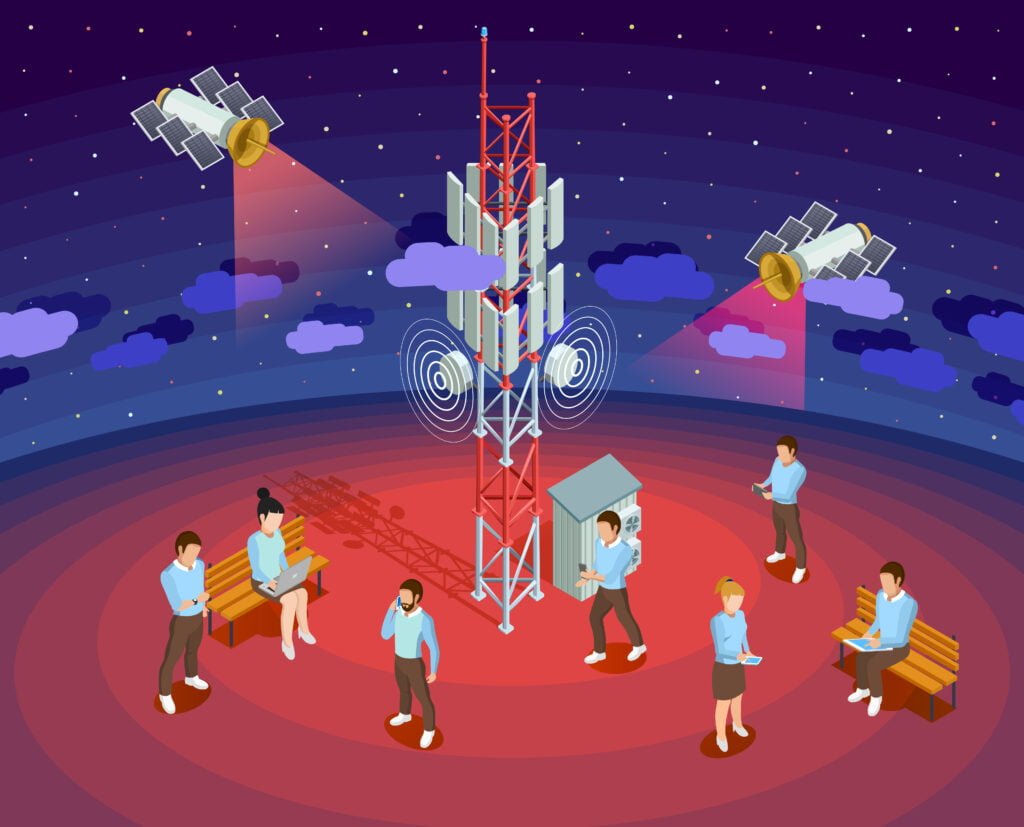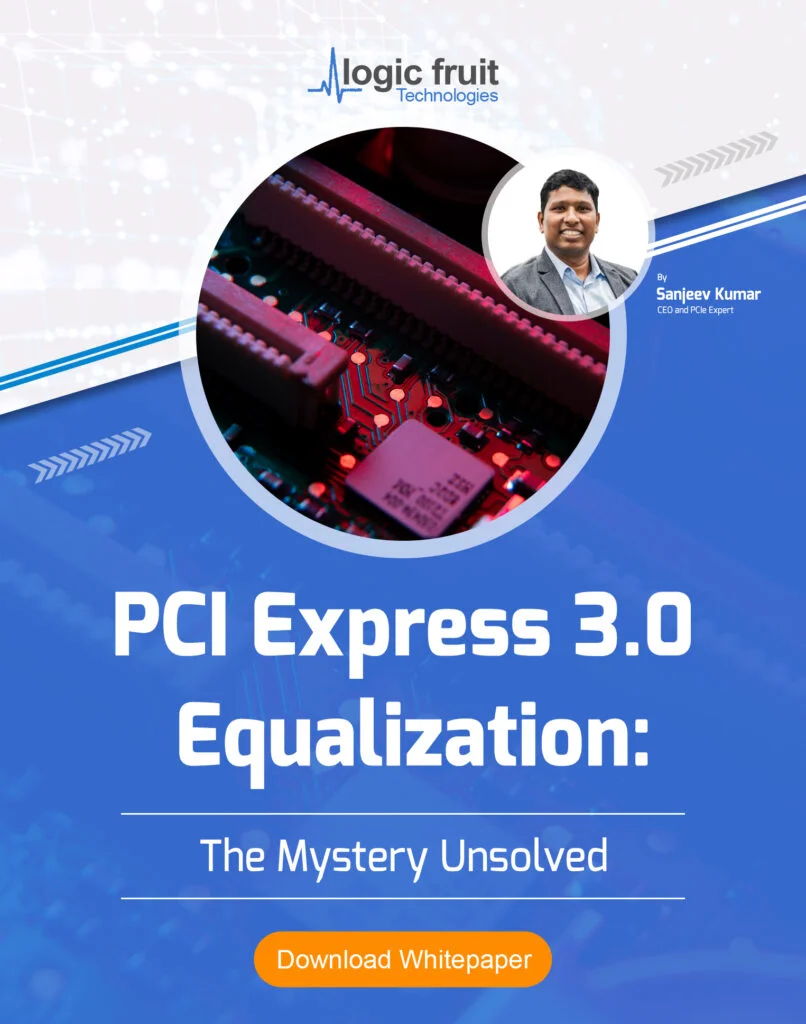In remote locations where traditional infrastructure is frequently unreliable or impracticable, satellite communications are essential for closing the connection gap. Reliable communication linkages are necessary for several reasons in these remote areas, including education, research, and emergency services as well as healthcare. Nonetheless, establishing uninterrupted connectivity in such far-off places presents several difficulties that call for creative solutions.
Field-programmable gate arrays, or FPGAs, are one such innovative approach that can be included in satellite communication systems. The dynamic and demanding nature of satellite communication is especially well-suited to the flexibility and agility that FPGAs offer.
In this exploration, we examine the vital nexus between FPGA technology and satellite communications, examining how FPGAs help to guarantee dependable connectivity in places where traditional infrastructure is inadequate. We want to discover how FPGAs can transform satellite communication systems by looking at their benefits, applications, and effects on remote areas.
Role of FPGAs in Satellite Communications
The role of Field-Programmable Gate Arrays (FPGAs) in satellite communications is pivotal, as these programmable devices play a crucial part in enhancing the performance, flexibility, and efficiency of satellite communication systems. FPGAs are semiconductor devices that can be configured and reconfigured after manufacturing, allowing for real-time adaptations to the changing demands of satellite operations. In the context of satellite communications, FPGAs are employed for various purposes, contributing to the overall reliability and efficiency of the system.
A. Explanation of FPGAs and their Flexibility
1. Definition of FPGAs:
Integrated circuits with a variety of programmable logic blocks and configurable interconnects are known as field-programmable gate arrays. FPGAs are programmable, unlike conventional Application-Specific Integrated Circuits (ASICs), allowing the user or designer to assign them specific functions.
2. Flexibility in Configuration:
Engineers can customize the functionality of FPGAs to meet the unique needs of satellite communication systems thanks to their great degree of flexibility. In the ever-changing and dynamic field of satellite technology, this flexibility is very useful.
3. Reconfigurability Advantage:
Satellite systems can be updated or changed without requiring actual hardware modifications thanks to FPGAs’ reconfigurability. This is particularly helpful in the rapidly evolving sector of satellite communications, where protocol updates and technology breakthroughs occur often.
B. Advantages of Using FPGAs in Satellite Communication Systems
1. Reconfigurability:
Real-time reconfiguration of FPGAs enables satellite communication protocols to be changed on the fly. This guarantees that the system can adjust to evolving needs, including modifications to frequency ranges or communication standards.
2. High-Performance Computing:
High-performance computing jobs are made possible by FPGAs, which are renowned for their parallel processing capabilities. This translates to effective data modulation, error correction, and signal processing in satellite communication, increasing communication’s overall speed and dependability.
3. Power Efficiency:
In many cases, FPGAs provide a more power-efficient alternative than fixed-function ASICs. This is crucial for satellite systems since power consumption needs to be minimized to maintain a longer mission life and take advantage of the satellite’s limited power supply.
FPGA Implementation in Satellite Communication
Sophisticated signal processing skills are necessary for satellite communication systems to guarantee dependable and effective data transfer between space-based satellites and ground stations. The use of Field-Programmable Gate Arrays (FPGAs) has transformed these systems’ data-handling capabilities in recent years. The nuances of FPGA implementation in satellite communication are examined in this part, which also highlights the critical role that these reconfigurable devices play in improving the overall performance of satellite communication systems.
A. Signal Processing in Satellite Communication
Long-distance signal transmission is a requirement of satellite communication, and preserving the integrity and caliber of the communication link depends on efficient signal processing. FPGAs are particularly good at managing the intricate algorithms and protocols related to signal processing because of their programmable logic and parallel processing capabilities.
Reconfigurability: The flexibility to reprogram FPGAs on the fly is one of their main features. Because mission objectives, environmental factors, or fluctuating data loads might cause needs to change dynamically, this capability is very helpful in satellite communication. Without requiring hardware changes, FPGAs allow for flexibility, allowing satellite communication systems to change to meet evolving needs.
High-performance computing: FPGAs are renowned for their capacity for parallel processing, which enables them to handle several jobs at once. This corresponds to quicker and more effective signal processing in satellite communication. It is possible to parallelize operations like encryption, error correction, modulating, and demodulation, which lowers latency and boosts system performance overall.
B. How FPGAs Enhance Signal Processing Capabilities
FPGAs are used in satellite communication systems in ways that go beyond conventional signal processing enhancements. These gadgets improve the system as a whole by helping with different facets of data management.
Onboard Data Compression: Real-time implementation of complex data compression techniques is possible using FPGA programming. This is especially helpful for maximizing bandwidth utilization, cutting down on the quantity of data that must be carried, and preserving satellite power.
Security and Encryption: Ensuring the security of sensitive data is crucial when using satellite communication. Advanced encryption techniques can be implemented on FPGAs to protect the integrity and secrecy of transmitted data.
Adaptive Beamforming: Adaptive beamforming is crucial in situations where satellites must connect with several ground stations or other satellites at the same time. With the use of FPGAs, antenna designs can be dynamically adjusted to maximize signal transmission and reception under real-time conditions.
C. Real-time Processing and Data Handling
Real-time processing is frequently needed for satellite communication to keep low-latency connections. This is where FPGAs shine, as they can run protocols and algorithms quickly, which is essential for fast data transfer.
Dynamic Resource Allocation: FPGAs allow for dynamic allocation of resources based on the current processing requirements. This ensures that computational resources are efficiently utilized, adapting to the varying demands of different communication scenarios.
Error Detection and Correction: FPGAs can be programmed to implement advanced error detection and correction mechanisms, crucial for mitigating the impact of signal degradation during transmission. This is especially valuable in remote areas where environmental factors can introduce additional challenges to signal quality.
Challenges and Solutions
Although satellite communications provide unmatched access in remote locations, there are several difficulties involved. FPGA technology integration offers challenges as well as opportunities for these systems. We will examine workable solutions to the problems encountered while integrating FPGAs in satellite communications in this part.
A. Hardware Limitations
Limited Resources: FPGAs have finite resources, including logic gates and memory. In satellite systems with complex communication protocols and data processing requirements, resource constraints can pose a significant challenge.
Power Consumption: Satellites operate on limited power, and minimizing power consumption is crucial. FPGAs, while flexible, can be power-hungry, potentially affecting overall satellite performance and longevity.
Solution: Efficient utilization of FPGA resources through optimized programming and design methodologies. Implementing power-aware design techniques to minimize power consumption without compromising performance.
B. Environmental Considerations
Radiation Effects: Satellites are exposed to high levels of radiation in space, which can affect the reliability of electronic components, including FPGAs. Radiation-induced errors can lead to malfunctions and data corruption.
Temperature Extremes: Drastic temperature variations in space can impact the performance of electronic components. FPGAs need to withstand both extreme cold and heat, posing a challenge for reliable long-term operation.
Solution: Designing radiation-hardened FPGAs specifically for space applications. Incorporating temperature control mechanisms and shielding to protect FPGAs from radiation and temperature extremes.
C. Integration Complexity
Interoperability: Integrating FPGAs with existing satellite communication systems can be complex. Ensuring seamless interoperability between FPGA-based components and other satellite subsystems is crucial for overall system efficiency.
Programming and Development: FPGA programming and development require specialized skills. The scarcity of experts in both satellite communications and FPGA programming can be a bottleneck in the deployment of these systems.
Solution: Standardizing interfaces and communication protocols to enhance interoperability. Providing training programs and resources to facilitate the development of FPGA expertise within the satellite communications community.
D. Security Concerns
Vulnerabilities: As with any technology, FPGAs are susceptible to security threats, including unauthorized access and tampering. Ensuring the security of data transmitted and processed by FPGA-based satellite systems is paramount.
Encryption Challenges: Implementing robust encryption algorithms on FPGAs without compromising performance can be challenging, especially in resource-constrained environments.
Solution: Employing advanced encryption techniques and regularly updating security protocols. Collaborating with cybersecurity experts to identify and address potential vulnerabilities in FPGA-based satellite communication systems.
Future Trends
With FPGA technology at its core, the satellite communications industry is set for significant growth. Future satellite communications are anticipated to be shaped by several significant trends that will improve connection and dependability in remote locations.
A. Emerging Satellite Technologies:
Low Earth Orbit (LEO) Satellites: The rise of LEO satellites promises reduced latency and increased data transfer speeds. FPGAs will play a crucial role in adapting to the dynamic nature of LEO constellations, optimizing signal processing, and enhancing overall system performance.
High Throughput Satellites (HTS): HTS, with their increased data capacity, will demand advanced signal processing capabilities. FPGAs are anticipated to evolve to meet the demands of higher data rates and more complex modulation schemes.
B. Advancements in FPGA Architecture:
Customized Accelerators: Future FPGAs are likely to feature specialized accelerators designed specifically for satellite communication tasks, enabling even more efficient and tailored signal processing.
Power Efficiency Improvements: Ongoing research aims to enhance FPGA power efficiency, crucial for satellite applications where power constraints are significant. This will contribute to the development of energy-efficient satellite systems.
C. Integration of Artificial Intelligence (AI):
Machine Learning for Signal Optimization: AI, particularly machine learning algorithms, will be integrated into FPGA architectures to optimize signal processing parameters dynamically. This adaptive approach will enhance the system’s ability to respond to changing environmental conditions.
Autonomous Network Management: AI-driven autonomous systems will contribute to self-optimizing satellite networks, addressing connectivity challenges in real-time and reducing the reliance on ground control interventions.
D. Global Collaboration for Standardization:
Interoperability Standards: The satellite communication industry is moving towards standardized interfaces and protocols. FPGAs will need to align with these standards to ensure seamless integration and interoperability across diverse satellite systems.
Collaborative Research Initiatives: International collaboration in research and development will likely accelerate innovation, fostering a shared knowledge base for enhancing satellite communication technologies.
E. Security Enhancements:
Secure Communication Protocols: With the increasing importance of satellite communication in sensitive applications, FPGAs will need to incorporate robust security features. This includes encryption protocols and secure key management systems to safeguard data transmission.
Resilience Against Cyber Threats: As cyber threats evolve, FPGAs in satellite communication systems will need to adapt to advanced intrusion detection and prevention mechanisms.
F. Environmental Sustainability:
Green FPGA Technologies: The satellite industry is becoming more conscious of environmental impact. Future FPGAs are likely to incorporate green technologies, focusing on energy-efficient designs and eco-friendly manufacturing processes
Conclusion
In summary, a significant development in tackling the difficulties of establishing dependable connectivity in remote places is the integration of Field-Programmable Gate Arrays (FPGAs) into satellite communications. When it comes to addressing the challenges presented by scant infrastructure, harsh environmental conditions, and significant distances that are intrinsic to distant places, FPGAs provide unmatched versatility and high-performance processing capabilities.
Even with these obstacles, research is still being done to improve the way FPGAs are included into satellite systems, as well as to make sure that all the little details are taken care of. Looking ahead, a new age of socioeconomic development is expected to be ushered in by the revolutionary influence of FPGA technology on connectivity in rural locations.
In addition to overcoming current obstacles, the cooperation of FPGAs with satellite communications opens the door to a time when even the most isolated settlements will be able to take advantage of the advantages of contemporary communication networks.


![What is FPGA Introduction to FPGA Basics [2023] computer-chip-dark-background-with-word-intel-it](https://fpgainsights.com/wp-content/uploads/2023/06/computer-chip-dark-background-with-word-intel-it-300x171.jpg)









